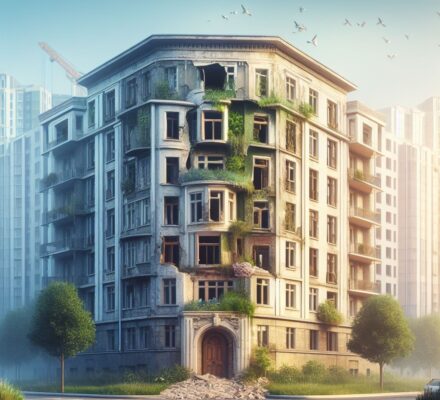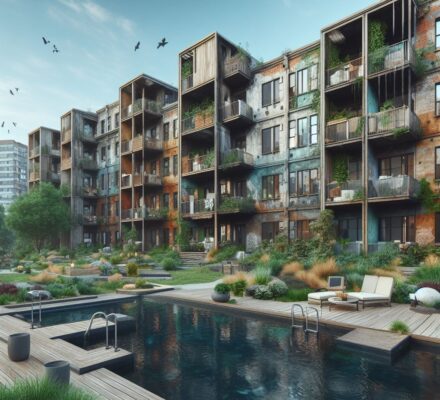Are you ready to unlock the hidden potential of your multifamily apartment investments? Look no further.
In this article, we will guide you through prime renovation strategies that will revitalize your properties and maximize your returns.
From assessing property condition to upgrading common areas and enhancing unit interiors, we will provide you with data-driven insights to help you make informed decisions.
Get ready to transform your apartment investments into lucrative assets.
Let’s dive in!
Key Takeaways
- Assessing property condition and potential is crucial for maximizing property value and attracting high-quality tenants.
- Identifying target tenant demographics helps in setting competitive rental rates and aligning renovations with market demand.
- Upgrading common areas and amenities enhances property appeal and improves tenant satisfaction and retention rates.
- Enhancing unit interiors and finishes, as well as implementing cost-effective energy-efficient solutions, contribute to a contemporary and sustainable living environment and can save on operating costs.
Assessing Property Condition and Potential
Assess the condition and potential of your multifamily property to determine necessary renovations and maximize investment returns. Before embarking on any renovation project, it’s essential to thoroughly evaluate the current state of your property. This assessment will help you identify any areas that require immediate attention and prioritize renovations that will have the greatest impact on the property’s value.
Start by examining the exterior of the building. Look for signs of wear and tear, such as cracked or peeling paint, damaged siding, or worn-out roofing. Assess the condition of the windows and doors, as they play a crucial role in maintaining energy efficiency and security. Additionally, evaluate the landscaping and parking areas to ensure they’re well-maintained and appealing to potential tenants.
Moving indoors, carefully inspect each unit. Take note of any structural issues, plumbing or electrical problems, and outdated fixtures. Assess the condition of the flooring, walls, and ceilings, paying particular attention to areas that may be prone to water damage or mold growth.
To make an accurate assessment, gather data on rental rates in the area, vacancy rates, and tenant preferences. This data will help you determine the potential rental income and identify renovations that will attract high-quality tenants.
Identifying Target Tenant Demographics
To identify the target tenant demographics for your multifamily property, consider gathering data on rental market trends and tenant preferences. This will provide valuable insights into the specific needs and desires of potential tenants, allowing you to tailor your renovations to attract and retain the right audience. Here are three key factors to consider when identifying your target tenant demographics:
- Age and lifestyle: Determine the age range and lifestyle preferences of your target tenants. Are they young professionals seeking modern amenities and convenient locations? Or are they families looking for larger units and proximity to schools and parks?
- Income levels: Understand the income levels of your target tenants to ensure that your rental rates are competitive within the market. This information will also help you determine the level of upgrades and amenities that would be attractive to your desired tenant base.
- Market demand: Analyze the rental market trends in your area to identify any gaps or opportunities. Are there specific types of units that are in high demand but low supply? By aligning your renovations with market demand, you can maximize your property’s appeal and potential profitability.
By carefully considering these factors and gathering relevant data, you can effectively identify your target tenant demographics and make informed decisions regarding your renovation strategy.
With a clear understanding of your target tenant demographics, the next step is to focus on upgrading common areas and amenities to enhance the overall appeal of your multifamily property.
Upgrading Common Areas and Amenities
Consider upgrading the common areas and amenities of your multifamily property to enhance the overall appeal and value for potential tenants. By improving the shared spaces and adding attractive amenities, you can differentiate your property from others in the market and attract high-quality tenants who are willing to pay a premium for a better living experience.
To help you prioritize your upgrades, here is a breakdown of the most popular amenities and their potential impact on tenant satisfaction and property value:
| Amenity | Tenant Satisfaction | Property Value |
|---|---|---|
| Fitness Center | High | Moderate |
| Outdoor Space | High | High |
| Pet-Friendly | High | High |
| Pool | Moderate | Moderate |
| Co-working Space | Moderate | Moderate |
As you can see, amenities such as a fitness center, outdoor space, and being pet-friendly tend to have a high impact on tenant satisfaction and property value. On the other hand, amenities like a pool and co-working space have a more moderate impact.
Investing in these upgrades can result in higher tenant retention rates, increased rental income, and a higher property valuation. It is essential to consider the preferences of your target tenants and the competitive landscape to ensure you are making the right choices for your property.
Enhancing Unit Interiors and Finishes
Upgrading the interiors and finishes of your multifamily units is crucial for creating a desirable living environment that attracts high-quality tenants. The appearance and functionality of the unit interiors play a significant role in tenant satisfaction and retention.
Here are three strategies to enhance the unit interiors and finishes:
- Modernize the kitchen and bathroom: These areas are highly influential in tenant decision-making. Upgrading appliances, fixtures, and countertops can give the units a more contemporary and luxurious feel. Consider installing energy-efficient appliances and stylish, durable materials for long-term cost savings and appeal.
- Optimize storage space: Adequate storage is a top priority for renters. Evaluate the current layout and design of closets, cabinets, and shelving to maximize storage potential. Adding built-in organizers and utilizing underutilized spaces can significantly enhance the functionality and appeal of the units.
- Upgrade flooring and lighting: The right flooring and lighting choices can transform the look and feel of a unit. Opt for durable, low-maintenance flooring options that are both visually appealing and practical for everyday living. Additionally, consider installing energy-efficient lighting fixtures to reduce utility costs and create a well-lit and inviting atmosphere.
Implementing Cost-Effective Energy-Efficient Solutions
Implement energy-efficient solutions to reduce costs and increase sustainability in your multifamily apartment investments. By incorporating cost-effective energy-efficient measures, you can not only save money on utility bills but also contribute to a greener and more sustainable environment. Here are some strategies you can implement:
| Energy-Efficient Measure | Potential Benefits |
|---|---|
| LED Lighting | – Reduces energy consumption by up to 75%<br>- Lasts longer, reducing maintenance costs<br>- Provides better lighting quality |
| Programmable Thermostats | – Adjusts temperature settings based on occupancy<br>- Reduces heating and cooling costs<br>- Increases tenant comfort |
| Energy-Efficient Appliances | – Lowers energy consumption and utility bills<br>- Attracts environmentally-conscious tenants<br>- Qualifies for energy efficiency rebates |
| Insulation Upgrades | – Reduces heating and cooling losses<br>- Improves indoor comfort<br>- Lowers energy bills |
Investing in these energy-efficient solutions can result in significant savings over time. For example, replacing conventional lighting with LED bulbs can result in annual energy savings of up to $75 per unit. Upgrading to programmable thermostats can save up to $180 per unit annually, while energy-efficient appliances can reduce utility bills by as much as 30%. Additionally, insulation upgrades can save up to 20% on heating and cooling costs. By implementing these cost-effective measures, you can enhance the financial performance of your multifamily apartment investments while making a positive impact on the environment.
Frequently Asked Questions
How Can I Determine the Potential Return on Investment for a Multifamily Apartment Renovation Project?
To determine the potential return on investment for a multifamily apartment renovation project, you need to analyze factors such as current market conditions, rental rates, renovation costs, and projected increase in property value.
What Are Some Common Challenges or Obstacles That Investors Face When Renovating Multifamily Apartments?
When renovating multifamily apartments, you may encounter challenges such as budget constraints, tenant disruptions, and regulatory hurdles. These obstacles can impact the project timeline and ROI, so it’s crucial to plan and strategize accordingly.
Are There Any Specific Regulations or Permits That Need to Be Considered When Renovating Multifamily Apartments?
When renovating multifamily apartments, you need to consider specific regulations and permits. These requirements vary by location and can include building codes, zoning regulations, and environmental permits. Make sure to research and comply with all necessary regulations.
How Can I Attract and Retain High-Quality Tenants After Completing a Multifamily Apartment Renovation?
To attract and retain high-quality tenants after renovating your multifamily apartment, focus on offering modern amenities, ensuring a well-maintained property, providing excellent customer service, and implementing effective marketing strategies.
What Are Some Effective Marketing Strategies to Promote a Newly Renovated Multifamily Apartment Complex to Potential Tenants?
To effectively market a newly renovated multifamily apartment complex, focus on showcasing the modern amenities, upgraded features, and the improved living experience. Utilize online platforms, social media, and targeted advertising to reach potential tenants and highlight the unique selling points of the property.




